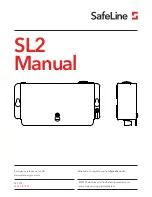
Operating manual – DualPAC with reciprocating compressors
38/63
0012201 en 2021.04
Note:
Rapid temperature variations in the secondary system can damage the DualPAC unit. It is
recommended to keep temperature changes below 0.5 K/min. Install a shunt system or a buffer
tank or expansion tank to avoid great variations in load and temperature. Avoid fluctuating pres-
sure and temperature as this can create wet suction gas and damage the compressor.
4.3.2
Cleaning in place
It is recommended to install valves and connections for chemical cleaning of open secondary cir-
cuits. DualPAC evaporators and condensers are fully welded heat exchangers and
cannot
be
cleaned mechanically.
For more information about chemical cleaning, please contact a Johnson Controls representative.
4.3.3
Temperature and flow control
The UniSAB III controllers adjust the compressor loads by means of input from a PT100 tempera-
ture sensor. Sensor threaded branch and sensor pockets are delivered with the heat pump unit.
The sensors must be fitted into the evaporator outlet pipe minimum 1 metre away from the
evaporator.
4.3.4
Water and brine treatment
Brine and water for industrial refrigeration plants often contain impurities that can create a coat-
ing (fouling) on the heat transferring surfaces. This reduces the heat transmission and in some
cases the coating causes corrosion of the heat transferring surfaces.
It is therefore
important
to keep brine and water under observation for both evaporator and con-
denser. Consult a water treatment expert concerning additives to the system. The liability of
Johnson Controls Denmark does
not
include any damage that may occur due to harmful impur-
ities in the system.
Be aware that all cooling towers and evaporative condensers experience a constant loss of water
due to evaporation. In order to keep the concentration of impurities low, a bleed system must be
installed.
Note:
In order to obtain the correct mixture, it is recommended to premix secondary refrigerants
(glycol or brine) and to check it subsequently.
4.3.5
R717 detector
Installation of R717 detectors in the room and in the secondary circuit of an indirect system must
be in accordance with EN 378 and/or local codes and rules. Detectors in the secondary circuit in
indirect systems are recommended regardless of the R717 charge limit according to EN 378.
The use of detectors in secondary circuits should be based on a risk assessment covering assess-
ment of:
•
risk of damaging secondary piping and components material (corrosion)
•
secondary refrigerant e.g. glycol in case of leakage
Leak detectors should be selected, installed and maintained in cooperation and accordance with
the recommendations of the detector supplier.
Содержание SABROE DualPAC
Страница 1: ...NS HPAC DualPAC with reciprocating compressors Operating manual EN ...
Страница 2: ......
















































